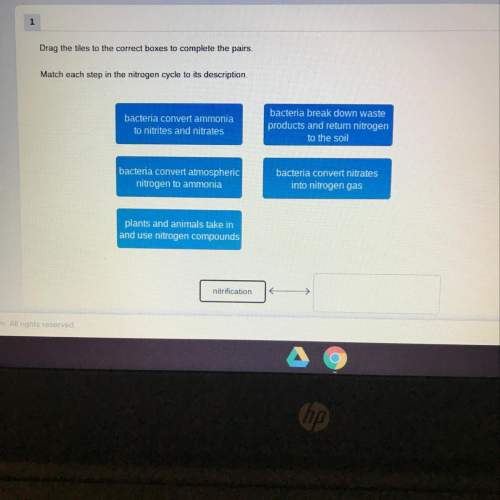Can someone do this for me? I'll give brainliest
Problem:
How can we use the relationships a...

Can someone do this for me? I'll give brainliest
Problem:
How can we use the relationships among weather data to produce a forecast?
Hypothesis/Prediction:
Based on the weather data you in Table 1 below, make a prediction about the weather from the data by completing the sentences below.. Make sure your prediction is made before you create graphs of your weather data.
1. If temperature increases/decreases, then the dew point will increase/decrease.
2. If temperature increases/decreases, then air pressure will increase/decrease.
Variables:
For this investigation:
List the independent variable(s):
List the dependent variable(s):
List the controlled variable(s):
Materials:
• Weather data in Table 1
• Weather Maps Symbols Key (see lesson)
• Graphing software or application
• Graphing tutorial (optional)
Procedures:
1. Using the Weather Data from Table 1, construct a line graph using Time on the X axis and Temperature for the Y axis. Make sure to plot both the temperature and dew point on your graph. Be sure to include units and add titles to the graphs. Refer to the graph example and graphing tutorial in the lesson if needed.
2. Using the Weather Data from Table 1, construct a second line graph using Time on the X axis and Air Pressure for the Y axis. Be sure to include units and add titles to the graphs.
3. Select two different times (one day and one night) from Table 1 and create a weather station model for each. Use the example diagram in the data sections and the Weather Map Symbol Key in the lesson to guide your weather station models.
4. Complete the Questions and Conclusion section of the lab report.
Graph 1
1. You may plot the data by hand on the template below or follow the steps below to create your graph.
2. Double click on the graph, then select the tab labeled “sheet 1”.
3. Input the data from Table 1 in the corresponding columns on the spreadsheet.
4. Once you have input all corresponding data, select the tab labeled “Chart” at the bottom of the table to display your line graphs.
Graph 2
1. You may plot the data by hand on the template below or follow the steps below to create your graph.
2. Double click on the graph, then select the tab labeled “sheet 1”.
3. Input the data from Table 1 in the corresponding columns on the spreadsheet.
4. Once you have input all corresponding data, select the tab labeled “Chart” at the bottom of the table to display your line graphs.
Data and Observations:
Table 1: Weather Data from Station 1, Cape Canaveral, Florida
Time of Day Temperature
(F°) Air Pressure
(sea level, mb) Relative Humidity Cloud Cover
(sky condition) Wind Speed
and Direction
(wind, mph) Dew Point (F°)
12:00 am 76 1013.3 97% A few clouds Calm 75
1:00 am 75 1013.0 100% A few clouds S 3 75
2:00 am 75 1012.8 100% A few clouds Calm 75
3:00 am 74 1012.5 100% Fair Calm 74
4:00 am 74 1012.3 100% A few clouds Calm 74
5:00 am 73 1012.5 100% Fair Calm 73
6:00 am 73 1013.0 100% Shallow Fog Calm 73
7:00 am 76 1013.4 100% A few clouds Calm 76
8:00 am 79 1013.6 90% A few clouds NW5 76
9:00 am 82 1013.9 79% A few clouds NW3 75
10:00 am 85 1014.1 68% Partly Cloudy Calm 73
11:00 am 85 1014.2 70% Mostly Cloudy E6 74
12:00 pm 87 1013.7 65% Mostly Cloudy NE9 74
1:00 pm 87 1013.1 65% Partly Cloudy E9 74
2:00 pm 87 1012.5 65% Mostly Cloudy E12 74
3:00 pm 87 1011.8 67% Mostly Cloudy E12; G17 75
4:00 pm 86 1011.3 70% Partly Cloudy Variable 7 75
5:00 pm 85 1011.5 72% Partly Cloudy SE7 75
6:00 pm 82 1011.7 77% Mostly Cloudy E5 74
7:00 pm 81 1012.1 82% Mostly Cloudy SE3 75
8:00 pm 79 1012.9 88% Mostly Cloudy SW6 75
9:00 pm 78 1013.8 90% Overcast SW3 75
10:00 pm 77 1014.4 94% Overcast SW7 75
11:00 pm 76 1014.3 100% Overcast Calm 75
Select two different times (one day and one night) from Table 1 and create a weather station model for each. Use the Weather Map Symbols Key from the lesson to guide your weather station models. An example is shown below. Place your weather station models under the data for each time.
DAY: (Time)
1. Temperature:
2. Dew Point:
3. Air Pressure: mb
4. Wind Direction—Choose One: N, NE, E, SE, S, SW, NW W
5. Wind Speed:
6. Cloud Cover—Choose One: CLR 0%, FEW 25%, SCT 50%, BKN 75%, OVC 100%
Place Weather Station Model here.
NIGHT: (Time)
1. Temperature:
2. Dew Point:
3. Air Pressure: mb
4. Wind Direction—Choose One: N, NE, E, SE, S, SW, NW W
5. Wind Speed:
6. Cloud Cover—Choose One: CLR 0%, FEW 25%, SCT 50%, BKN 75%, OVC 100%
Place Weather Station Model here.

Answers: 3
Another question on Biology

Biology, 22.06.2019 04:00
The transport tubes for food coming down the plants are called?
Answers: 2

Biology, 22.06.2019 08:30
Which statement best describes how the nucleus, the rough endoplasmic reticulum, and ribosomes interact during protein synthesis?
Answers: 3

Biology, 22.06.2019 15:00
Cells must be in osmotic equilibrium with their surroundings environments because if they swell or shrink thier membranes will rupture
Answers: 1

Biology, 22.06.2019 20:00
Are humans interfering with or a part of evolution happening today? find examples of evolution seen in recent history that could be caused by human activity.
Answers: 2
You know the right answer?
Questions








Geography, 06.09.2021 04:40

Social Studies, 06.09.2021 04:40





English, 06.09.2021 04:50

Computers and Technology, 06.09.2021 04:50


English, 06.09.2021 04:50


Chemistry, 06.09.2021 04:50




